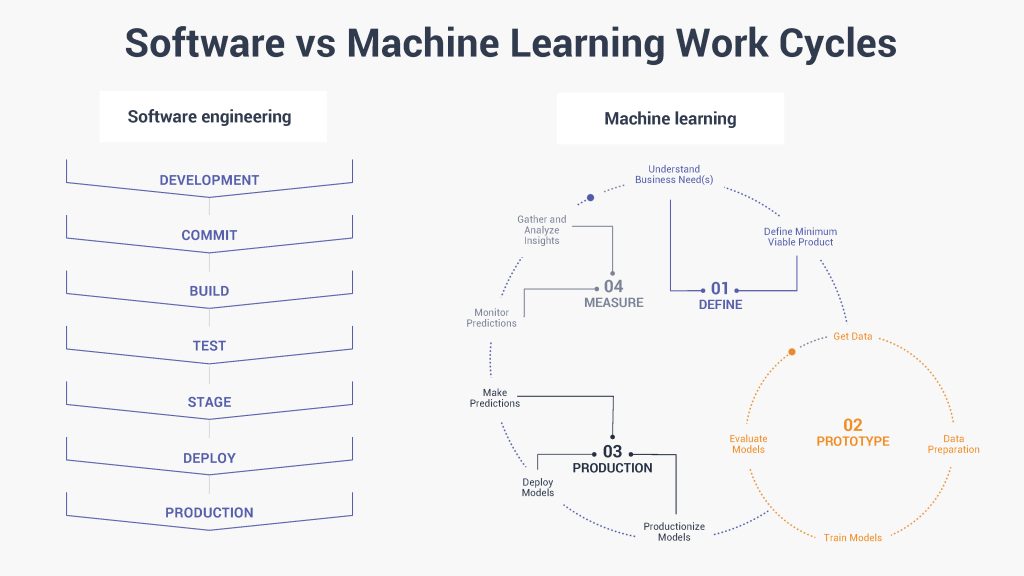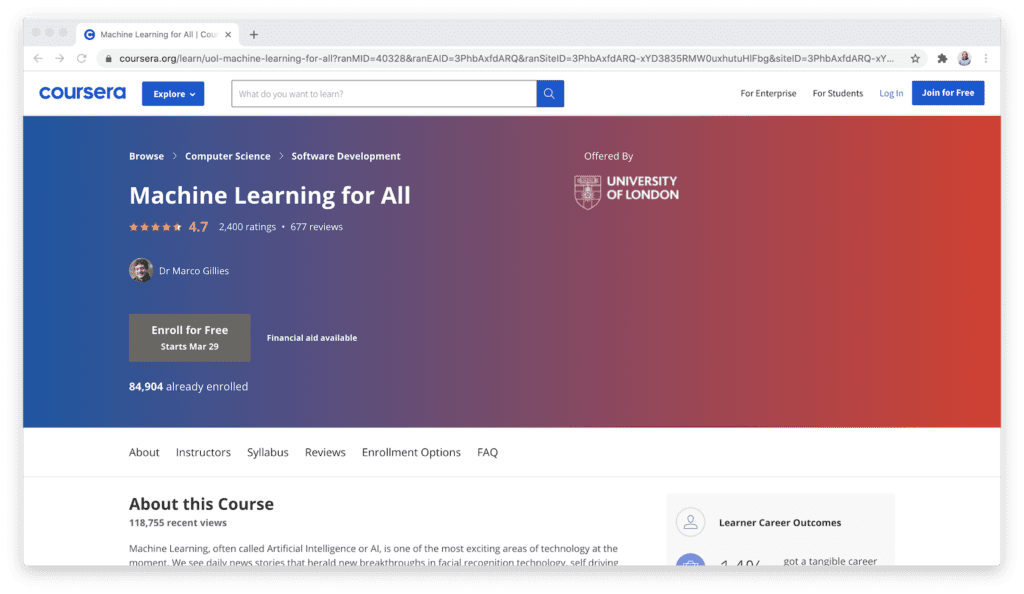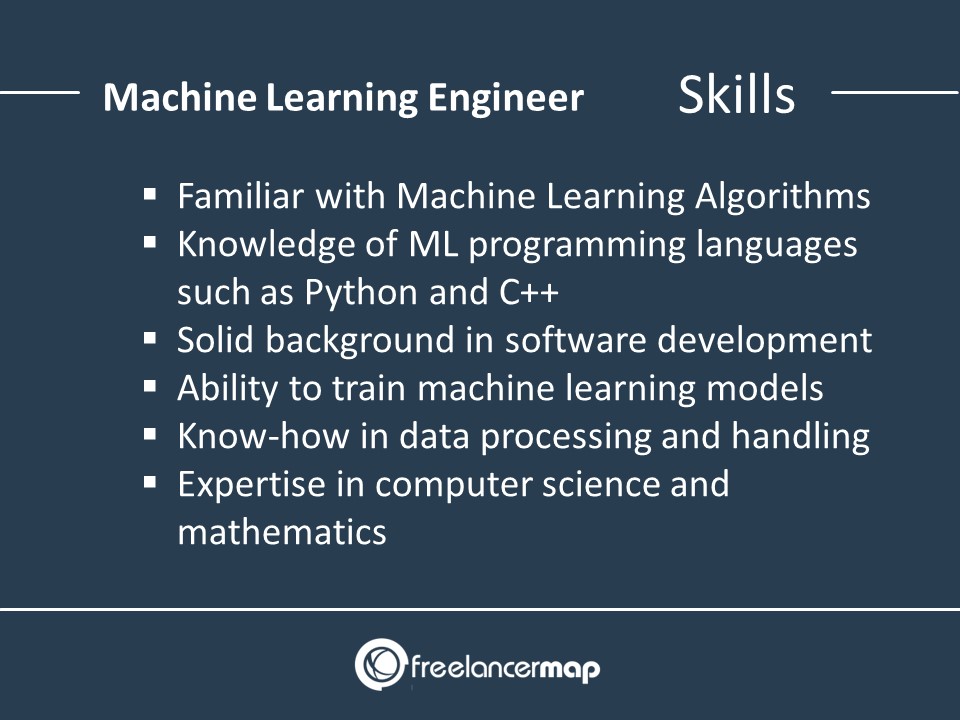All Categories
Featured
Table of Contents
- – The 7-Minute Rule for 6 Steps To Become A Mach...
- – The 8-Minute Rule for Aws Machine Learning Eng...
- – 8 Simple Techniques For Generative Ai Training
- – Not known Details About What Does A Machine L...
- – 4 Simple Techniques For Machine Learning Cer...
- – Not known Details About 5 Best + Free Machin...
- – Software Engineering In The Age Of Ai Things...
Some individuals assume that that's disloyalty. If somebody else did it, I'm going to use what that individual did. I'm forcing myself to assume through the possible remedies.
Dig a bit deeper in the math at the beginning, just so I can develop that structure. Santiago: Ultimately, lesson number seven. This is a quote. It claims "You have to comprehend every detail of a formula if you wish to utilize it." And after that I claim, "I think this is bullshit recommendations." I do not believe that you have to recognize the nuts and screws of every formula before you utilize it.
I have actually been using neural networks for the longest time. I do have a sense of exactly how the gradient descent functions. I can not describe it to you right currently. I would have to go and examine back to actually get a much better instinct. That doesn't suggest that I can not address things making use of neural networks, right? (29:05) Santiago: Trying to compel people to believe "Well, you're not going to be effective unless you can explain each and every single detail of how this works." It goes back to our sorting instance I believe that's just bullshit advice.
As an engineer, I have actually worked on numerous, lots of systems and I have actually made use of lots of, many points that I do not recognize the nuts and screws of just how it functions, although I understand the impact that they have. That's the final lesson on that particular thread. Alexey: The funny thing is when I think of all these collections like Scikit-Learn the formulas they utilize inside to execute, for instance, logistic regression or another thing, are not the like the formulas we research in machine discovering courses.
The 7-Minute Rule for 6 Steps To Become A Machine Learning Engineer
Even if we tried to learn to get all these fundamentals of device learning, at the end, the algorithms that these libraries utilize are different. Right? (30:22) Santiago: Yeah, definitely. I think we need a lot extra pragmatism in the industry. Make a lot more of an impact. Or concentrating on delivering value and a little less of purism.

I normally talk to those that want to function in the industry that want to have their influence there. I do not risk to speak about that since I don't understand.
However right there outside, in the sector, pragmatism goes a long way without a doubt. (32:13) Alexey: We had a comment that claimed "Really feels more like motivational speech than discussing transitioning." Maybe we must change. (32:40) Santiago: There you go, yeah. (32:48) Alexey: It is a great motivational speech.
The 8-Minute Rule for Aws Machine Learning Engineer Nanodegree
One of the things I desired to ask you. First, let's cover a couple of things. Alexey: Allow's start with core devices and frameworks that you need to find out to actually transition.
I recognize Java. I recognize how to make use of Git. Possibly I know Docker.
Santiago: Yeah, absolutely. I think, number one, you need to begin finding out a little bit of Python. Considering that you already recognize Java, I do not assume it's going to be a significant change for you.
Not since Python is the same as Java, but in a week, you're gon na get a whole lot of the differences there. Santiago: After that you obtain particular core tools that are going to be used throughout your whole occupation.
8 Simple Techniques For Generative Ai Training
That's a collection on Pandas for information control. And Matplotlib and Seaborn and Plotly. Those three, or one of those three, for charting and showing graphics. You get SciKit Learn for the collection of maker discovering algorithms. Those are tools that you're going to have to be utilizing. I do not recommend simply going and discovering about them unexpectedly.
Take one of those programs that are going to begin introducing you to some issues and to some core ideas of maker learning. I do not keep in mind the name, but if you go to Kaggle, they have tutorials there for free.
What's good regarding it is that the only need for you is to know Python. They're mosting likely to offer a problem and tell you exactly how to use choice trees to solve that specific trouble. I assume that procedure is exceptionally powerful, due to the fact that you go from no device finding out background, to recognizing what the issue is and why you can not resolve it with what you understand right currently, which is straight software program engineering practices.
Not known Details About What Does A Machine Learning Engineer Do?
On the other hand, ML engineers concentrate on structure and releasing artificial intelligence versions. They concentrate on training models with information to make predictions or automate jobs. While there is overlap, AI engineers manage more diverse AI applications, while ML designers have a narrower concentrate on maker discovering formulas and their functional implementation.

Device learning engineers concentrate on creating and deploying maker discovering designs right into manufacturing systems. On the various other hand, information researchers have a more comprehensive duty that consists of information collection, cleaning, exploration, and structure versions.
As companies significantly adopt AI and machine learning modern technologies, the demand for proficient experts grows. Artificial intelligence designers work on innovative projects, add to development, and have competitive incomes. Success in this area calls for constant learning and keeping up with advancing innovations and techniques. Artificial intelligence duties are usually well-paid, with the potential for high gaining capacity.
ML is basically various from typical software application advancement as it concentrates on training computers to pick up from data, rather than programming explicit regulations that are executed methodically. Unpredictability of results: You are probably made use of to creating code with predictable results, whether your function runs once or a thousand times. In ML, however, the results are much less particular.

Pre-training and fine-tuning: How these models are educated on large datasets and after that fine-tuned for particular tasks. Applications of LLMs: Such as message generation, belief evaluation and info search and access. Papers like "Interest is All You Required" by Vaswani et al., which introduced transformers. On the internet tutorials and courses concentrating on NLP and transformers, such as the Hugging Face training course on transformers.
4 Simple Techniques For Machine Learning Certification Training [Best Ml Course]
The ability to take care of codebases, merge modifications, and solve disputes is equally as essential in ML advancement as it remains in traditional software jobs. The abilities established in debugging and screening software application applications are very transferable. While the context might change from debugging application logic to determining issues in data handling or version training the underlying principles of systematic examination, hypothesis testing, and iterative improvement coincide.
Maker knowing, at its core, is heavily reliant on data and probability theory. These are important for recognizing exactly how algorithms learn from data, make predictions, and evaluate their efficiency.
For those interested in LLMs, an extensive understanding of deep knowing styles is valuable. This includes not only the technicians of neural networks but also the architecture of details models for different usage cases, like CNNs (Convolutional Neural Networks) for picture handling and RNNs (Recurrent Neural Networks) and transformers for consecutive data and all-natural language handling.
You should know these issues and learn methods for determining, mitigating, and interacting about predisposition in ML designs. This includes the potential effect of automated choices and the honest implications. Many models, specifically LLMs, require significant computational resources that are usually supplied by cloud systems like AWS, Google Cloud, and Azure.
Building these abilities will certainly not only facilitate an effective change into ML however also make sure that designers can add properly and responsibly to the innovation of this vibrant field. Concept is essential, however nothing defeats hands-on experience. Start working with tasks that enable you to use what you've discovered in a useful context.
Take part in competitions: Join systems like Kaggle to join NLP competitions. Develop your tasks: Begin with straightforward applications, such as a chatbot or a text summarization tool, and gradually raise intricacy. The area of ML and LLMs is rapidly developing, with brand-new advancements and innovations emerging routinely. Remaining updated with the most up to date study and trends is essential.
Not known Details About 5 Best + Free Machine Learning Engineering Courses [Mit
Sign up with communities and forums, such as Reddit's r/MachineLearning or area Slack channels, to go over ideas and obtain suggestions. Participate in workshops, meetups, and seminars to link with other experts in the area. Contribute to open-source jobs or write post regarding your understanding trip and jobs. As you acquire competence, start looking for chances to include ML and LLMs right into your job, or look for brand-new functions concentrated on these technologies.
Potential use cases in interactive software application, such as recommendation systems and automated decision-making. Recognizing unpredictability, standard analytical measures, and probability circulations. Vectors, matrices, and their duty in ML algorithms. Mistake minimization methods and gradient descent discussed merely. Terms like version, dataset, functions, tags, training, reasoning, and recognition. Information collection, preprocessing techniques, model training, evaluation procedures, and deployment factors to consider.
Choice Trees and Random Forests: User-friendly and interpretable designs. Matching problem types with proper versions. Feedforward Networks, Convolutional Neural Networks (CNNs), Frequent Neural Networks (RNNs).
Information circulation, change, and function engineering strategies. Scalability principles and efficiency optimization. API-driven methods and microservices assimilation. Latency management, scalability, and variation control. Constant Integration/Continuous Implementation (CI/CD) for ML operations. Model monitoring, versioning, and efficiency monitoring. Identifying and addressing changes in version performance gradually. Resolving efficiency traffic jams and resource monitoring.
Software Engineering In The Age Of Ai Things To Know Before You Get This

You'll be presented to three of the most pertinent elements of the AI/ML discipline; monitored learning, neural networks, and deep learning. You'll grasp the differences between traditional programs and machine knowing by hands-on development in supervised learning prior to developing out complex distributed applications with neural networks.
This program serves as an overview to maker lear ... Show Extra.
Table of Contents
- – The 7-Minute Rule for 6 Steps To Become A Mach...
- – The 8-Minute Rule for Aws Machine Learning Eng...
- – 8 Simple Techniques For Generative Ai Training
- – Not known Details About What Does A Machine L...
- – 4 Simple Techniques For Machine Learning Cer...
- – Not known Details About 5 Best + Free Machin...
- – Software Engineering In The Age Of Ai Things...
Latest Posts
How To Answer Probability Questions In Machine Learning Interviews
How To Prepare For A Technical Software Engineer Interview At Faang
How To Build A Portfolio That Impresses Faang Recruiters
More
Latest Posts
How To Answer Probability Questions In Machine Learning Interviews
How To Prepare For A Technical Software Engineer Interview At Faang
How To Build A Portfolio That Impresses Faang Recruiters